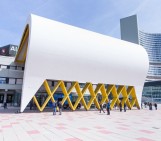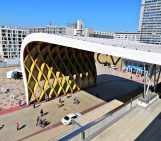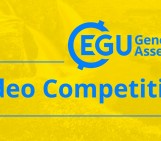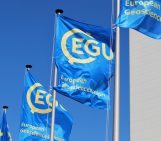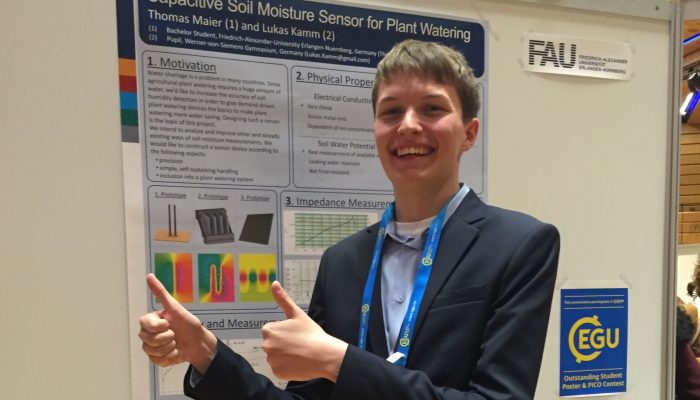
Presenting at an international conference is daunting, even for the most seasoned of scientists; not so for Thomas Maier (a second year university student) who took his research (co-authored by Lukas Kamm, a high-school student) to the EGU 2016 General Assembly! Not only was their work on developing a moisture sensor impressive, so was Thomas’ enthusiasm and confidence when presenting his research. Hazel Gibson and Kai Boggild, EGU Press Assistants at the conference, caught up with the budding researcher to learn more about the pair’s work. Scroll down to the end of this post for a full video interview with Thomas.
Thomas Maier might seem like your average bright and enthusiastic EGU delegate, but together with his co-author Lukas Kamm, he has invented a water sensor that very well might help change the way astronauts live in space. Not only is their invention helping to revolutionise aerospace, but they are also the youngest delegates at the conference, Thomas is a second year university student at Friedrich-Alexander Universität Erlangen-Nürnberg and Lukas is attending high school at Werner-von-Siemens Gymnasium. We caught up with Thomas to speak with him about his invention.
Could you explain to us what led you to develop this water sensor?
We started this project four years ago for a contest called Jugend Forscht, a German youth sciences competition in Germany and the project we came up with was about giving plants demand driven watering. After we built our first sensor, we continued our work until it was possible to send the sensor into space, for a project called EU:CROPIS.
Can you tell us how your sensor works?
The sensor is based on a capacitive measuring method. So, you have two electrodes close to each other, which have an electrical capacitance (or ability to store an electrical charge) between them. The change in water content close to the electrodes changes the capacity of the sensor. Then we measure the capacity of the electrodes by measuring the time constant of the capacitor over time.
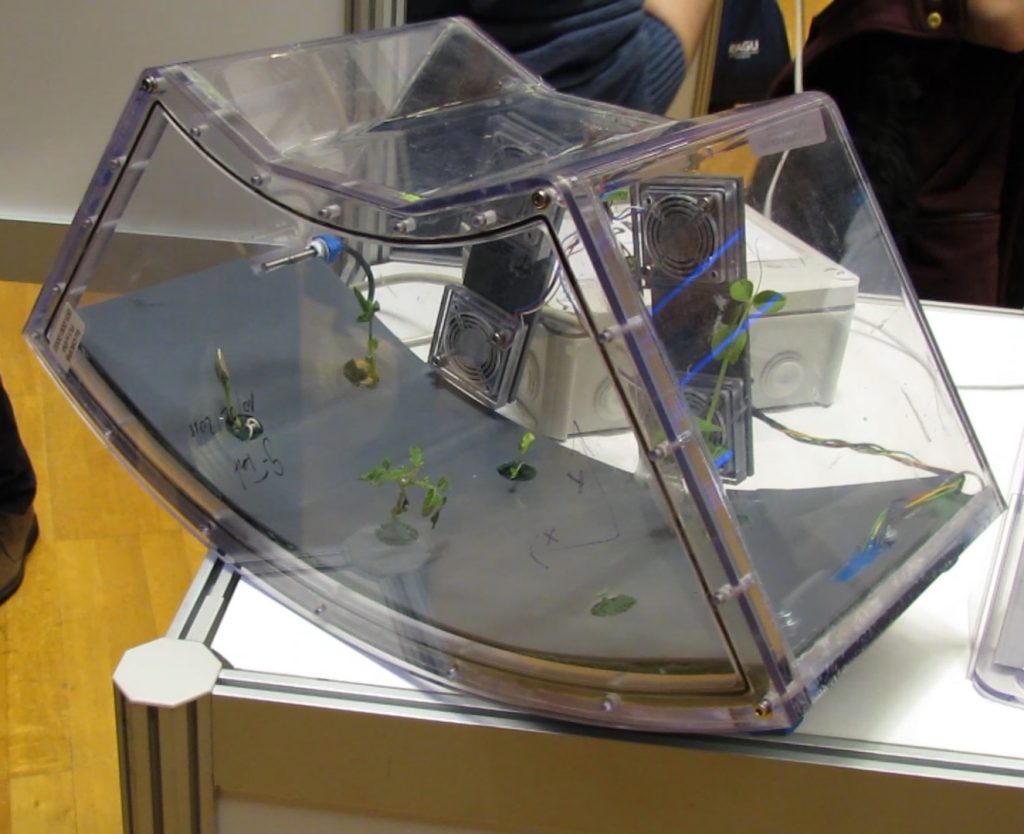
The greenhouse which forms part of the EU:CROPIS project. The greenhouse is home to Thomas and Lukas’ water sensor. (Credit: Kai Boggild/EGU)
Can you tell us more about the EU:CROPIS project?
The EU:CROPIS is mainly about this here [indicates greenhouse model], and this is a greenhouse which will go into space, July next year. The greenhouse will rotate and will generate different gravitational forces that may impact the amount of water available to plants which will be grown in here. And now, after a lot of work, our sensor will be placed on the very right [hand side] of the greenhouse and will measure the soil moisture for the plants.
What are you plans for this project into the future?
Our plans for the future are in taking part in the EDEN-ISS project, this is a project on the International Space Station, that is looking into planting 20 square meters of plants in the ISS and our sensor would be used too. So that is the next aim of this project.
Thanks Thomas for showing us your invention, and good luck to Lukas, who couldn’t attend the conference this year as he is busy with his high-school exams!
Interview by Hazel Gibson, video interview by Kai Boggild, EGU Press Assistants

